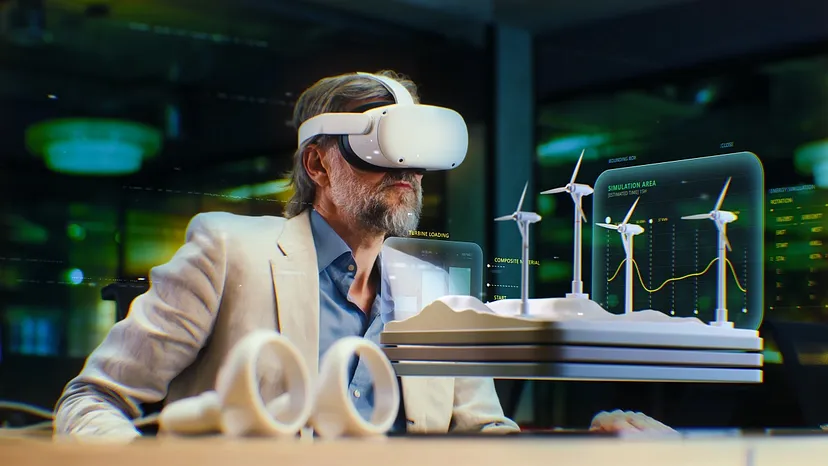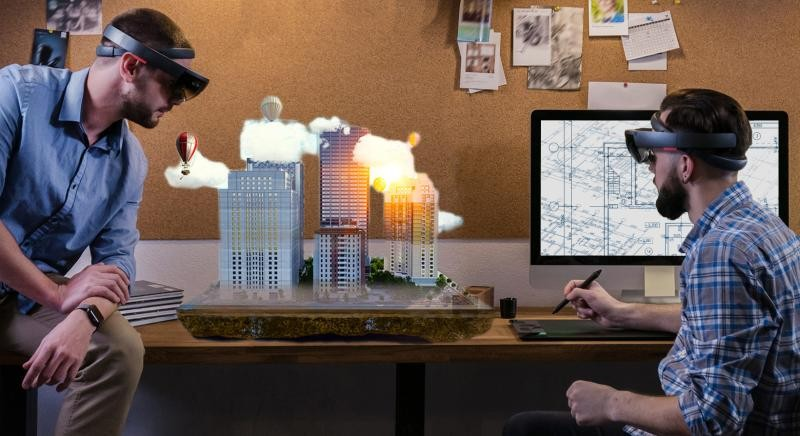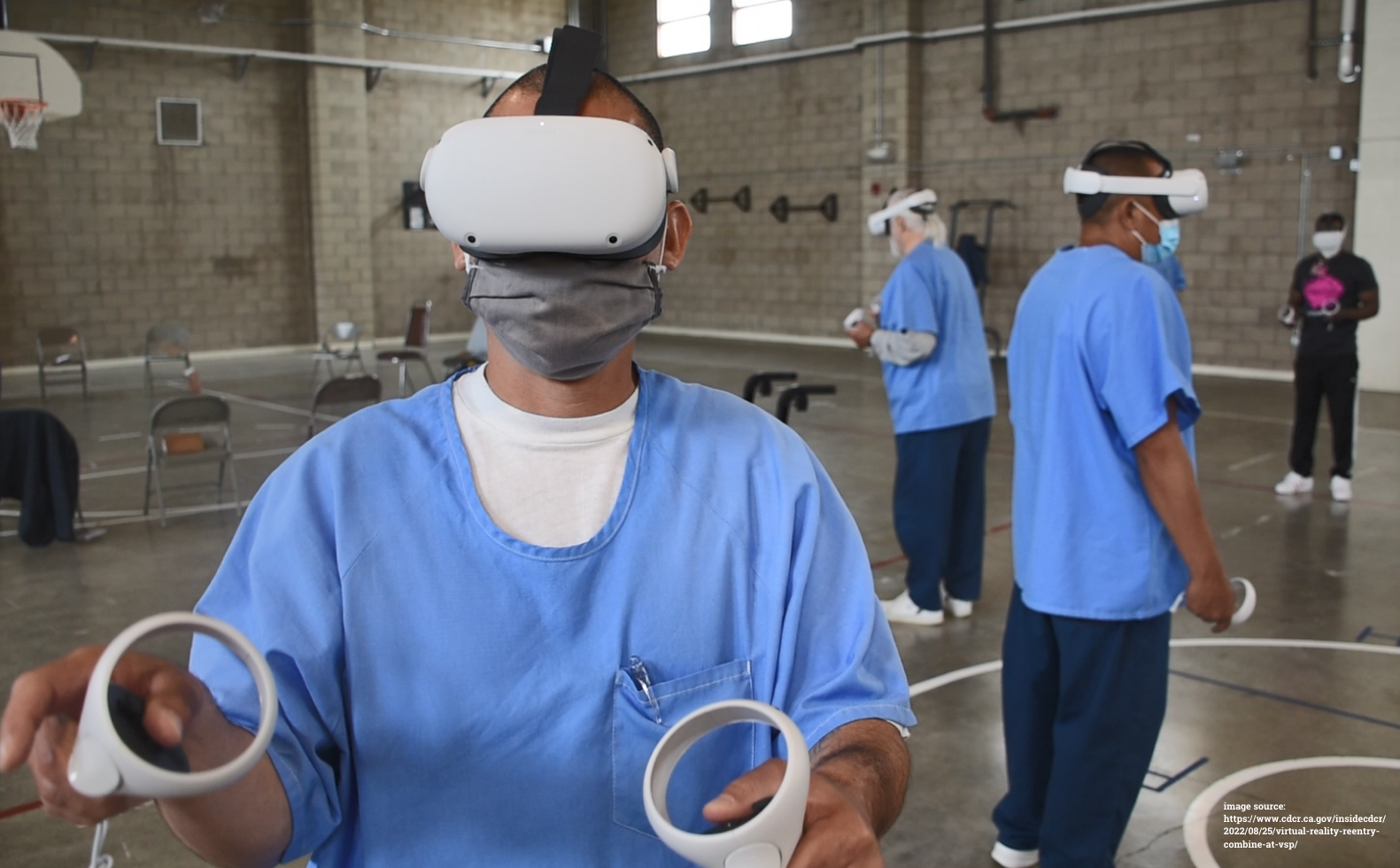Revolutionizing Geological Analysis: AI Meets Tradition
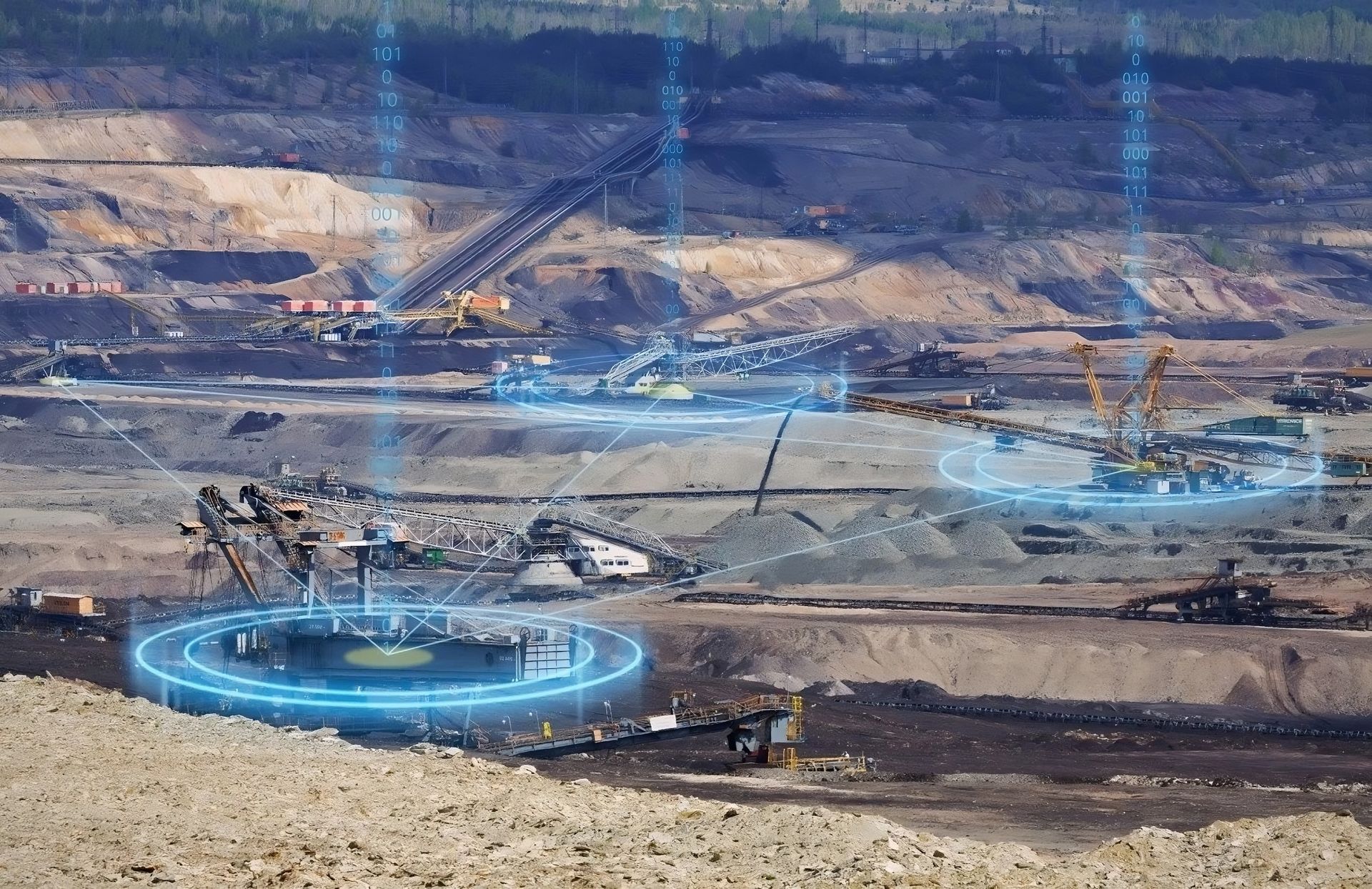
Introduction:
In a landscape where digital innovation intersects with geological exploration, BSD XR emerges as a trailblazer, reshaping the narrative of thin sections analysis. This journey marks a paradigm shift in the application of extended reality (XR) technologies, ushering in a new era of precision and efficiency in mineral identification and geological studies.
Acknowledging Collaborations and Support
BSD XR's success story in the realm of thin sections of computer vision owes a debt of gratitude to a collaborative ecosystem. From MMDF's foundational support to the direct business backing by the Province of Manitoba and Manitoba Chamber of Commerce, each entity played a pivotal role in catalyzing BSD XR's groundbreaking venture. The partnerships with academic institutions like the University College of the North and collaborations with the Northern Manitoba Mining Academy, CEDF, and Hudbay solidified the infrastructure necessary for pioneering advancements.
Understanding the Problem Space
The challenges surrounding thin sections analysis encompass a spectrum of complexities. The necessity for specialized equipment and skilled technicians, coupled with the high costs and time-consuming nature of the process, underscores the intricacies involved. Additionally, the significance of accurate mineral identification, the limitations of sample size, technological advancements increasing costs, and the critical role of thin section analysis across industries like mining, oil exploration, and environmental science amplify the stakes and demands within the field.
Preserving Earth's Geological Legacy: The Art of Storing Thin Sections
In the world of geological studies, wooden boxes have long been revered for their ability to safeguard delicate thin sections. Crafted with care, these custom-made boxes provide an ideal environment, shielding these geological slices from environmental shifts. Each box's compartments cradle these sections securely, ensuring protection from damage while enabling easy organization and retrieval. Beyond their practical function, these wooden boxes embody tradition and historical value, reflecting the enduring legacy of geological exploration. They become more than storage units; they evolve into guardians of Earth's history, preserving vital fragments for future study and discovery.
Revolutionizing Handwritten Annotations: The OCR Journey
Deciphering intricate handwritten notes on thin slide cards posed a unique challenge, prompting the development of a specialized Optical Character Recognition (OCR) tool. Utilizing meticulously curated datasets from Roboflow, our approach aims to deploy a fully trained model on AWS Sagemaker. This integration will revolutionize data processing workflows, ensuring accuracy and efficiency in interpreting handwritten data.
Mitigating Challenges of Inconsistent Thin Section Data in Geological Analysis
Navigating inconsistent data and slides in thin-section analysis presents a hurdle for geologists and researchers. These disparities stem from various factors like evolving preparation techniques, equipment changes, and differing recording methods. Decades-old slides may not meet today's standards, causing variations in mineral observations. Moreover, discrepancies in accompanying data, like location or composition, due to different recording approaches, complicate interpretation. Bridging these gaps demands meticulous review, cross-referencing historical and modern data, and sometimes re-preparing slides for accuracy. Addressing these inconsistencies is crucial for aligning past and present research, and preventing misinterpretations in geological studies.
-
City skyline
Photo By: John DoeButton
Proposed Solution: Merging Technology with Tradition
In response to these challenges, BSD XR presents a groundbreaking solution: the fusion of cutting-edge computer vision and artificial intelligence (AI) with the traditional practices of thin sections analysis. This synergistic approach aims to streamline the identification process, reducing time and costs while ensuring precision and accessibility. Leveraging computer vision to analyze scanned images of thin sections and employing AI algorithms for mineral
categorization represents a pivotal advancement that promises to redefine the landscape of
geological studies.
Scanning Process and Workflow: A Detailed Insight
The intricacies of the scanning process unveil a meticulous workflow that ensures the digitization of thin sections with unparalleled accuracy. Each step, from capturing images under varying conditions to the manual naming conventions and meticulous alignment, reflects the precision and dedication required in digitizing these invaluable geological specimens. The commitment to preserving the integrity of data storage highlights BSD XR's dedication to upholding excellence in thin sections digitization.
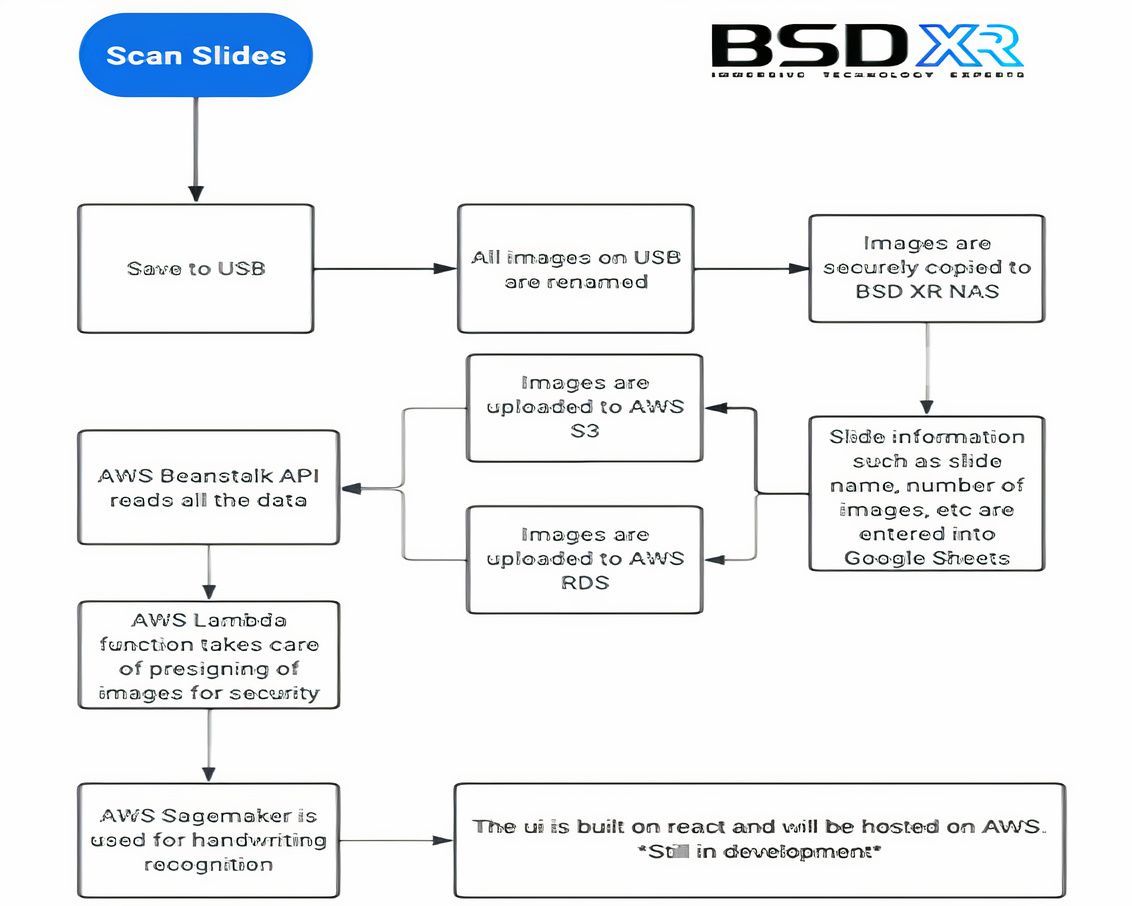
Optimizing Microscopy Workflow: Advanced Slide Labeling Techniques
When it comes to labelling microscope slides, precision is key for researchers. Take, for example, the naming convention used: 'm258-110' denotes the slide name, while 'n1pp' and 'w1xp' signify the location and polarization of the images captured.
In this system:
'n' stands for North and 'w' for West, indicating specific areas on the slide.
'1' pinpoints the location of the picture on the slide.
'pp' denotes plane polarized, while 'xp' signifies cross-polarized images.
This meticulous naming structure allows scientists to efficiently organize and access microscope slide images, facilitating their research endeavours.
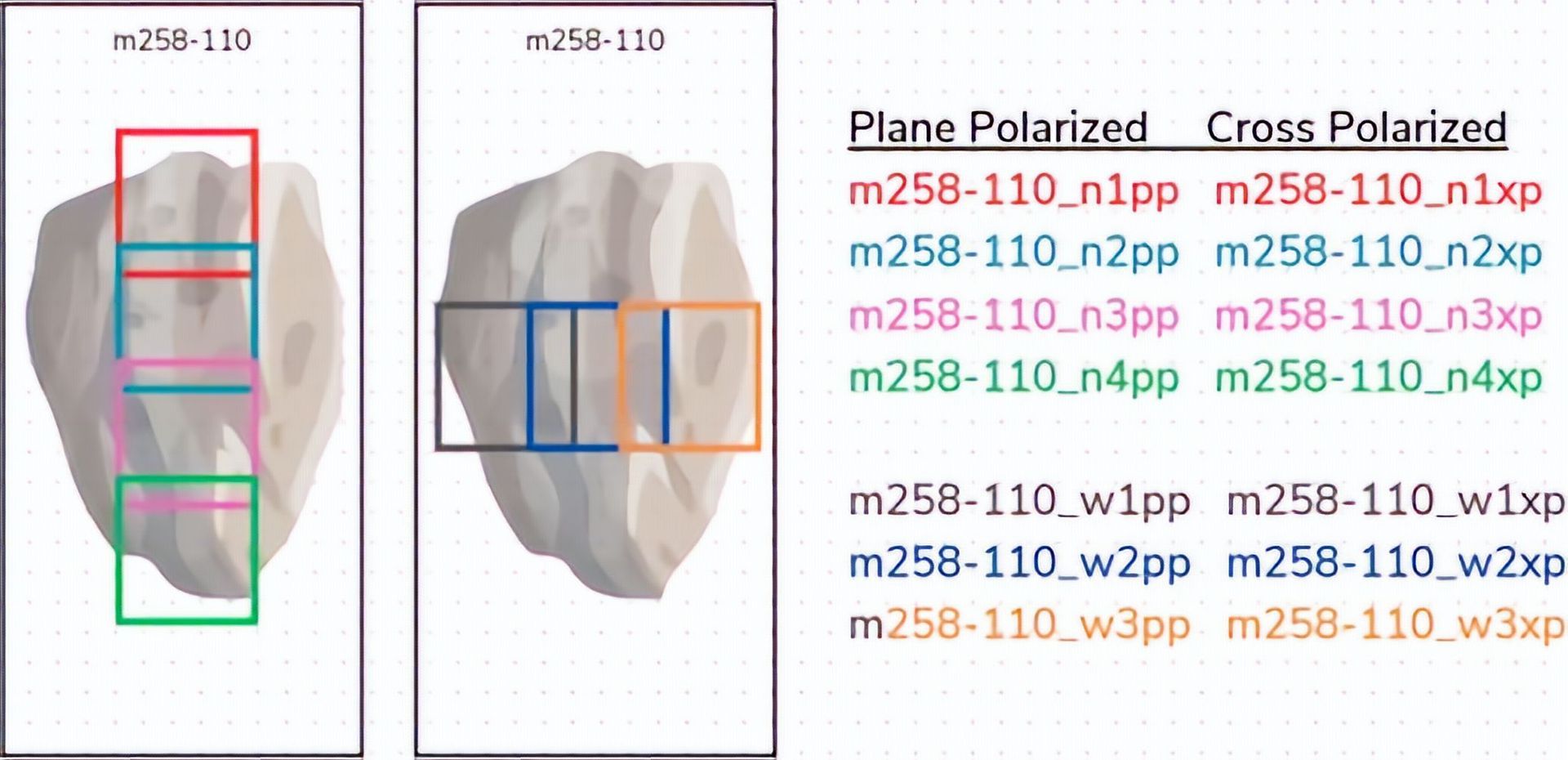
Validation and Quality Control: Upholding Excellence
BSD XR's commitment to maintaining the quality of digitized thin sections is exemplified through a rigorous validation process. The weekly audits, spearheaded by experts Yasir Azizi and Paul Alexandre, ensure that the scanned data adheres to the highest standards of clarity, color accuracy, and fidelity to the original specimens. Moreover, bi-weekly team meetings and the utilization of communication tools like Slack ensure constant alignment, collaboration, and problem-solving among team members, fostering a culture of continuous improvement.
Detections and Achievements: Navigating Success and Challenges
The journey toward successful mineral identification is marked by milestones and hurdles. BSD XR highlights their strides in achieving confidence scores, model development, and optimizations in neural network architectures. Technical achievements, such as the Model Assisted Labeling process, have revolutionized labelling times, enhancing mineral identification in thin sections. Challenges in thin slide segmentation, digitizing handwritten information cards, and model parameter tuning have been met with innovative solutions, paving the way for future advancements.
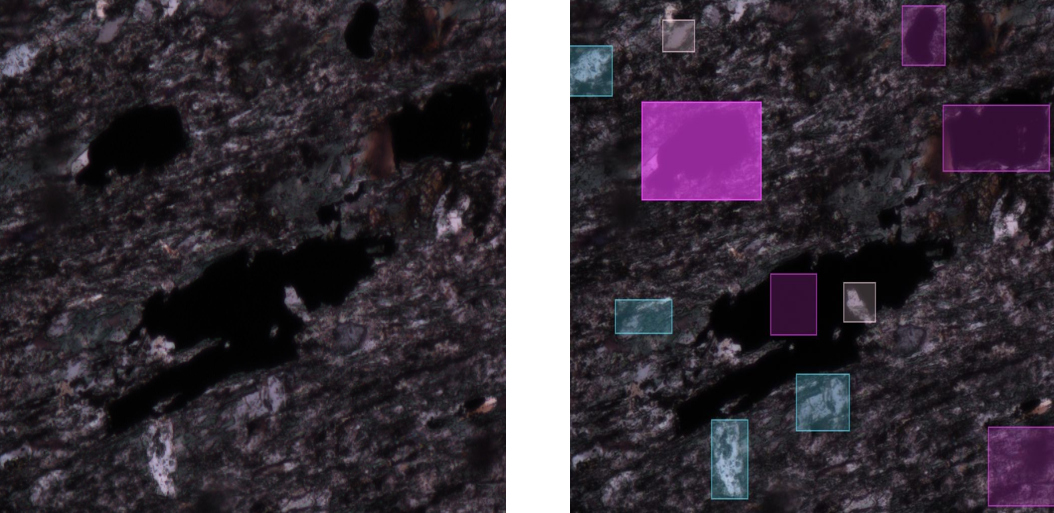
Evolving Mineral Detection: From Training to Inference
In the realm of mineral detection, AI models trained on annotated Cocon-Seg images have sparked a journey of refinement and enhancement. Beginning with a successful initial model that excelled in detecting Biotite, the progression expanded to encompass a range of minerals relevant to Thin Slide scans. Through iterative training, consistent improvements have been observed, with confidence scores for Biotite consistently above 80% while other minerals are steadily climbing from 40% to 50%. The augmentation of labelled data has lengthened training times, prompting optimization efforts to strike a balance between accuracy and efficiency, especially with the inclusion of segmentation images. This ongoing evolution promises to revolutionize mineral detection, shaping a more comprehensive and efficient model for geological analysis.

Collaborations and Expansion
BSD XR's collaboration with academic institutions like Arizona State University and Northeastern University has accelerated progress by adding expertise and resources to the development and training of models. This expansion has broadened the horizons of thin sections of computer vision, paving the way for further innovation, research, and partnerships in the field.
Progress and Future Endeavors
In the pursuit of redefining thin sections analysis, BSD XR showcases the progress made in training models, inference accuracy, and the labelling process. Retraining models using labelled datasets, exploration of model-assisted labelling, and consistent enhancements hint at a promising future in this domain. The continued efforts to expand labelled datasets and optimize model performance highlight a commitment to pushing the boundaries of thin sections of computer vision.
Conclusion: Redefining Geological Studies
BSD XR concludes its journey by reflecting on the transformative impact of computer vision and AI in thin sections analysis. This amalgamation of cutting-edge technology with traditional geological practices has reshaped the landscape of geological studies, promising accessibility, accuracy, and cost-effectiveness. The future holds boundless possibilities as BSD XR continues to spearhead innovation and redefine the very fabric of thin sections analysis.
DOWNLOAD THE DETAILED PDF VERSION HERE
Join Us in Revolutionizing Thin Sections Analysis
BSD XR is dedicated to pioneering advancements in thin sections analysis, reshaping the future of geological studies through the fusion of cutting-edge technology and traditional practices. We invite collaborators, institutions, and organizations passionate about pushing the boundaries of exploration and analysis to join us in this transformative journey.
Why Collaborate with BSD XR?
- Innovative Technology: Experience the forefront of thin sections analysis with our state-of-the-art computer vision and AI technologies.
- Access to Expertise: Collaborate with a team of experienced professionals dedicated to excellence in geological studies and technology development.
- Pilot Our Technology: Engage in pilot programs to explore the efficacy and potential applications of our tech in your specific field or research area.
Partnership Opportunities
- Academic Collaborations: Partner with BSD XR to enhance research, and training models, and explore new possibilities in geological studies.
- Industry Integration: Explore applications of our technology in industries like mining, oil exploration, environmental science, and more.
- Pilot Programs: Work with us in piloting our technology to address specific challenges or enhance existing processes in thin-sections analysis.
Get in Touch
Are you interested in revolutionizing thin-sections analysis and exploring the potential of our technology?
Reach out to us to discuss collaboration opportunities, and pilot programs, or to learn more about our innovative solutions. Together, let’s redefine the landscape of geological studies.
Click to share this article
Other posts from our blog
Transform your business with immersive technologies
Schedule a consultation to see how BSD can help your organization unlock new avenues of engagement.
CONTACT US
Global Headquarters
1555 Dublin Avenue, R3E 3M8
Winnipeg, MB, Canada
PUBLIC RELATIONS
DIVISIONS
GENERAL
IN THE SPIRIT OF RECONCILIATION
We would like to acknowledge that the land on which we gather is Treaty One Territory, the home and traditional lands of the Anishinaabe (Ojibwe), Ininew (Cree), and Dakota peoples, and in the National Homeland of the Red River Métis. Our drinking water comes from Shoal Lake 40 First Nation.
Join 10,000+ people who get XR tips, insights, and company updates monthly.
Contact Us
We will get back to you as soon as possible.
Please try again later.
Privacy Policy Accessibility Sitemap Support
Bit Space Development Ltd.








